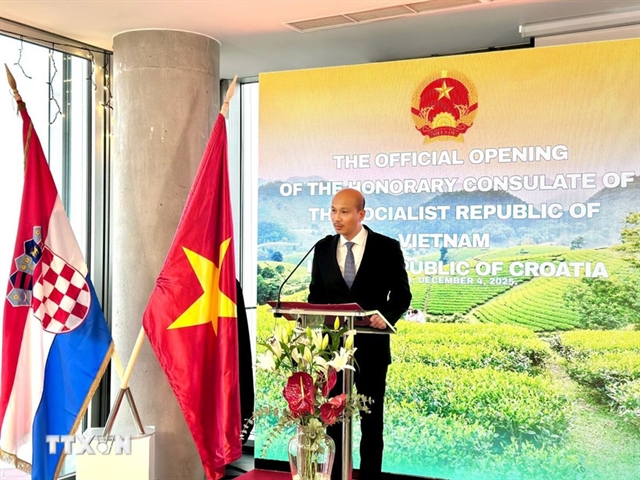 Economy
Economy

Việt Nam saw US dollar deposits overseas skyrocketing, possibly due to foreign currency policies implemented by the central bank, the Việt Nam Institute for Economic and Policy Research (VEPR) said.
 |
| According to a report released this week, the think-tank said Vietnamese deposits overseas, which were previously negligible, was US$7.3 billion till the third quarter of 2015. — Photo tuoitre.vn |
HÀ NỘI Viet Nam News -– Việt Nam saw US dollar deposits overseas skyrocketing, possibly due to foreign currency policies implemented by the central bank, the Việt Nam Institute for Economic and Policy Research (VEPR) said.
According to a report released this week, the think-tank said Vietnamese deposits overseas, which were previously negligible, was US$7.3 billion till the third quarter of 2015.
While direct and indirect investments remained little changed, the outflow caused the overall balance of payments to post a deficit of $6.6 billion in Q3 of 2015, the report said, adding this could be seen as a forex “liquidity trap” in the local banking system.
VEPR Director Nguyễn Đức Thành said the significant rise required close monitoring. He said the abnormality could be related to some side effects of the central bank’s foreign exchange policies of dropping the US dollar deposit interest rate to zero per cent and limiting the objects of lending in foreign currency.
According to the report, the absence of an effective dollar trading market, coupled with the zero-per cent interest rate on dollar deposits, had prompted many people to deposit their foreign currency abroad at low interest rates while domestic banks had to borrow from foreign banks at higher interest rates.
The report also said the low interest rates for both deposits and loans in dollars, together with expectations of the đồng’s devaluation following the devaluation of the Chinese yuan, had prevented banks from finding borrowers for dollars. As a result, depositing foreign currency in foreign banks had become the most profitable solution.
"If this theory is proved to be true, the amount of deposits overseas will continue to rise," the report said.
While agreeing that the curbing of dollarisation was the correct move by the central bank, the report said more synchronous solutions were needed to enhance trust in the domestic currency. Only then could the economy utilise the large amount of foreign currency that the Vietnamese were now depositing overseas.
Thành said it was necessary to develop a large-scale foreign currency trading market to release the dollar amount being kept overseas. The policy to lower the dollar deposit interest rate to zero per cent, which was not in line with the development of the foreign currency trading market, had led to an imbalance in the foreign currency market.
Đồng interest rate
According to the report, the VEPR said the demand for capital mobilisation had increased at commercial banks, pushing up the interest rate.
After rising significantly last year, capital mobilisation in the first quarter this year continued to increase by 2.26 per cent compared to the same period in 2015.
The think-tank explained that high demand for mobilisation was to prepare capital for the ambitious credit growth plan of the banking system in 2016, partly to meet the demand for medium- and long-term capital, which had been reduced from 60 per cent to 40 per cent under a provision in Circular 36.
The VEPR assumed the higher demand for mobilisation would push up the interest rate in both the lending market and the inter-bank market.
The đồng deposit interest rates at commercial banks had reached the ceiling of 5.5 per cent per year as regulated by the central bank. The inter-bank interest rate also increased by 1-2 per cent on average compared to the 2014-15 period, the VEPR reported.
According to the VERP, the credit growth rate is likely to be 1.54 per cent in Q1 this year. - VNS




